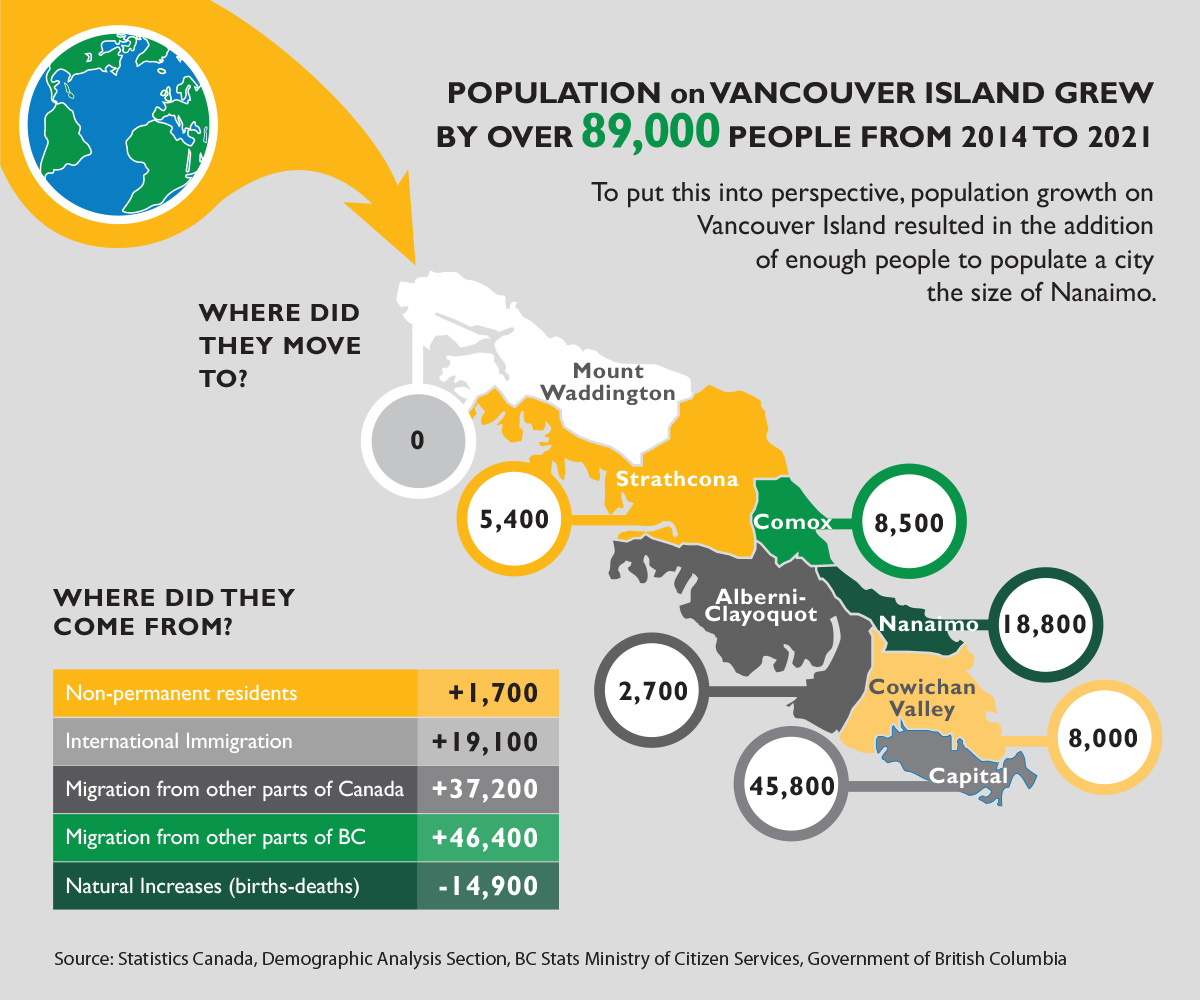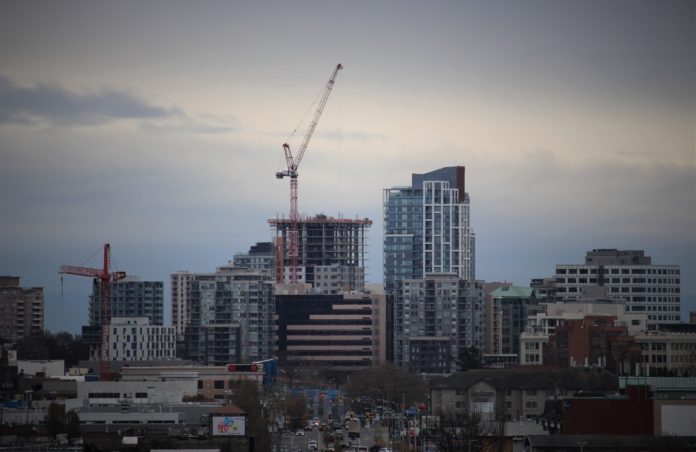Feeling lost in the crowd?
It’s no wonder, as Vancouver Island’s population growth has continued on an upward trend and the capital region sees the greatest influx of new residents.
That’s according to Vancouver Island Economic Alliance (VIEA), which says over 89,000 people migrated to the island between 2014 and 2021.
Data shows the capital region accounted for around 45,800 new residents, while the Cowichan Valley and Nanaimo accounted for 8,000 and 18,800, respectively.

“To put this into perspective, population growth on Vancouver Island resulted in the addition of enough people to populate a city the size of Nanaimo,” VIEA said Thursday.
According to VIEA, most growth stems from people moving to the island from other parts of BC and other parts of Canada—as the area attracted 20% of BC’s international immigrants between 2014 and 2021.
And while Vancouver Island and retirees may be synonymous, the VIEA says a 2016 shift in migration trends indicated it wasn’t just retirees moving in.
“The number of migrants from other provinces was relatively stable between 2014 and 2020, while the percentage over the age of 50 declined from 59 percent to 35 percent,” it said.
In 2021 specifically, VIEA saw a “significant increase” in migrants to the island from other provinces, which it says may be related to COVID-19 and increased opportunities for remote work.
“Initially, most growth was concentrated in the South Island region around Victoria up to Nanaimo, and near Campbell River where major projects were under construction,” VIEA added.
But as housing affordability deteriorated in Victoria and Nanaimo, people started heading to areas in the north and west, according to the alliance.
While it may come as no surprise, the cost of living in Greater Victoria is increasing for buyers and renters alike.
The British Columbia Real Estate Association finds the average house price in Victoria continues to rise, climbing 20.3% in just one year.
February 2022 data shows the average residential house price hit $1,041,068—a jump of around $175,000 from February 2021, when the average price was $865,235.
“Smaller communities such as Tofino have struggled to provide services to their growing populations, and housing affordability has become a concern across the region,” VIEA said.


